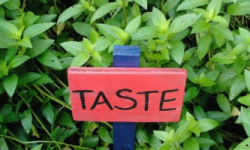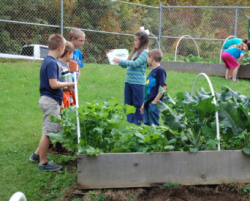Healthy Schools - School Gardens
How do school gardens support healthier kids?
Creating a school garden provides experiential, hands-on learning opportunities and it inspires children to eat a wider, healthier range of food. The garden is an excellent classroom, allowing students to see results of their work. This experiential learning also includes physical activity, supporting a healthy life style.
School gardens can also be used as sensory gardens which encourage students or visitors to use all five senses to engage in the world around them. Gardens are more than soil and plants; they demonstrate the way food makes it to the table and may be the only opportunity some students have to interact with nature.
What are some school garden program tips?
- Educate teachers and students. Education includes the practical planning of the garden and theoretical understanding of the benefits of gardening. Work with students to identify what foods comprise a healthy diet and how food can improve health. Then, plan the garden layout and select plants for desired garden results.
- Make it fun. Create a garden that is a pleasure to visit. This will make the learning and work involved with the garden much easier to complete. Signage in a garden can be fun as well as educational.
- Advertise the garden. Put the garden in a visible area and share its progress in school newsletters or class updates. This will maximize the impact and influence of the benefits the garden brings to the school.
- Touch, smell, and taste the results. Take trips to the garden to monitor progress. Use the produce in the cafeteria or allow students and faculty to take it home; reaping the benefits of the garden work is a great life lesson for students.
- Look for grants or partners. School gardening grants may be available for schools or youth programs. These grants may help fund items such as soil, raised bed materials and literature for educating the students and public about the benefits of the school garden program. Grant options can be found at the Whole Kids Foundation and the Kids Gardening websites listed below or by Googling “School Garden Grants 2019.”


What are some more resources?
Kidsgardening.org’s resources for Starting a School Garden Program: Overview explain how to create and sustain a school garden. These resources include how to gather support, create a gardening committee, find funding, identify grants and more.
The Whole Kids Foundation has a list of resources for schools that are looking to incorporate gardens and healthy food options into their programming.
Schools have found that sensory gardens can be very beneficial to students, as they help teach the senses of taste, touch, sound, smell and feel. Found out how to incorporate a sensory garden into your school grounds here.
The USDA’s Food Safety Tips for School Gardens is a helpful document .
